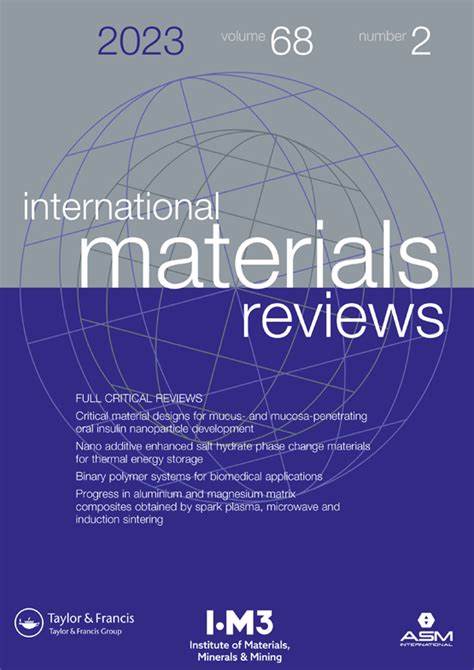Progress in modelling solidification microstructures in metals and alloys. Part II: dendrites from 2001 to 2018
IF 15.5
1区 材料科学
Q1 MATERIALS SCIENCE, MULTIDISCIPLINARY
引用次数: 94
Abstract
ABSTRACT This is the first account of the history of modelling dendritic and cellular solidification. While Part I reviewed the progress up to the year 2000 [Kurz W, Fisher DJ, Trivedi R. Progress in modelling solidification microstructures in metals and alloys: dendrites from 1700 to 2000. Intern Mater Rev. 2019;64:311–354], Part II retraces our modelling capabilities developed during the early years of the present century. Advances in in-situ X-ray observations of solidification of metallic alloys are also presented. While the most important contributions are mentioned, the authors are aware that such a historical review must leave many worthy articles by the wayside. This overview considers dendrite tip growth and morphology, rapid solidification, melt flow, fragmentation, columnar-to-equiaxed transition, dendrite spacings, coalescence, grain competition, and cellular growth. Modelling across the length scales from nano- up to macroscopic solidification phenomena by massive phase field computations or multiscale approaches show the potential for the simulation of real processes such as additive manufacturing, single crystal casting, welding or advanced solidification processes.金属和合金凝固微观组织模型的研究进展。第二部分:2001年至2018年的树突
这是树突和细胞凝固建模历史的第一个帐户。第一部分回顾了到2000年的进展[Kurz W, Fisher DJ, Trivedi R.]。金属和合金凝固微观组织建模的进展:从1700年到2000年的枝晶。实习材料Rev. 2019; 64:311-354],第二部分回顾了我们在本世纪初开发的建模能力。本文还介绍了金属合金凝固现场x射线观测的研究进展。虽然提到了最重要的贡献,但作者意识到,这样的历史回顾一定会把许多有价值的文章放在一边。这篇综述考虑了枝晶尖端的生长和形态、快速凝固、熔体流动、破碎、柱状到等轴转变、枝晶间距、聚并、晶粒竞争和细胞生长。通过大规模相场计算或多尺度方法对从纳米到宏观凝固现象的长度尺度进行建模,显示了模拟真实过程(如增材制造、单晶铸造、焊接或高级凝固过程)的潜力。
本文章由计算机程序翻译,如有差异,请以英文原文为准。
求助全文
约1分钟内获得全文
求助全文
来源期刊

International Materials Reviews
工程技术-材料科学:综合
CiteScore
28.50
自引率
0.00%
发文量
21
审稿时长
6 months
期刊介绍:
International Materials Reviews (IMR) is a comprehensive publication that provides in-depth coverage of the current state and advancements in various materials technologies. With contributions from internationally respected experts, IMR offers a thorough analysis of the subject matter. It undergoes rigorous evaluation by committees in the United States and United Kingdom for ensuring the highest quality of content.
Published by Sage on behalf of ASM International and the Institute of Materials, Minerals and Mining (UK), IMR is a valuable resource for professionals in the field. It is available online through Sage's platform, facilitating convenient access to its wealth of information.
Jointly produced by ASM International and the Institute of Materials, Minerals and Mining (UK), IMR focuses on technologies that impact industries dealing with metals, structural ceramics, composite materials, and electronic materials. Its coverage spans from practical applications to theoretical and practical aspects of material extraction, production, fabrication, properties, and behavior.
 求助内容:
求助内容: 应助结果提醒方式:
应助结果提醒方式:


